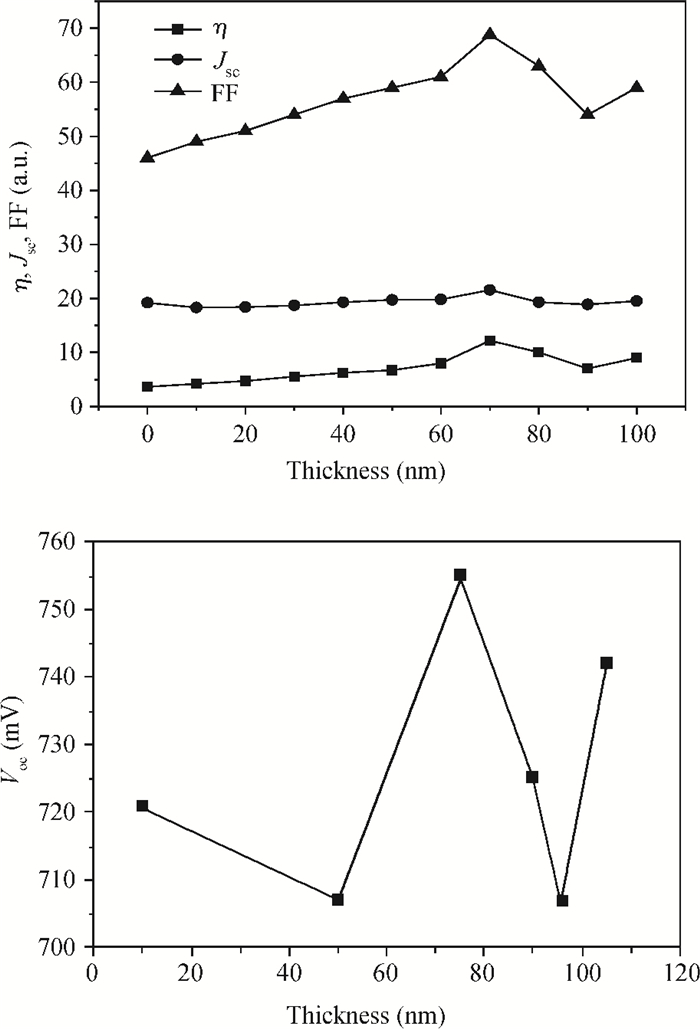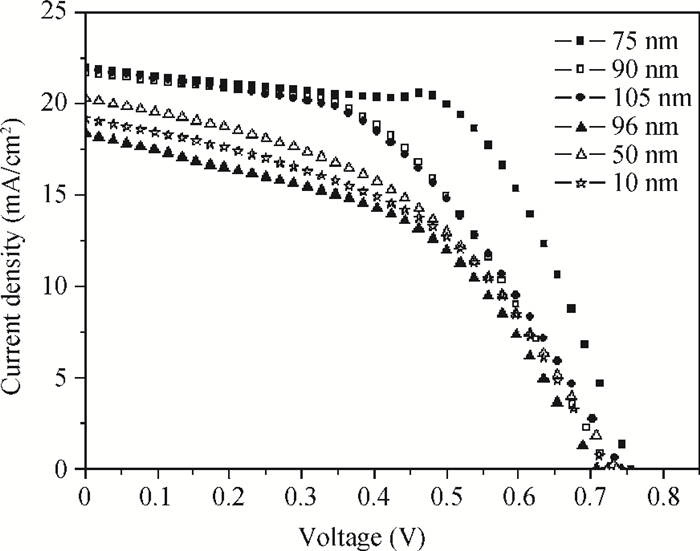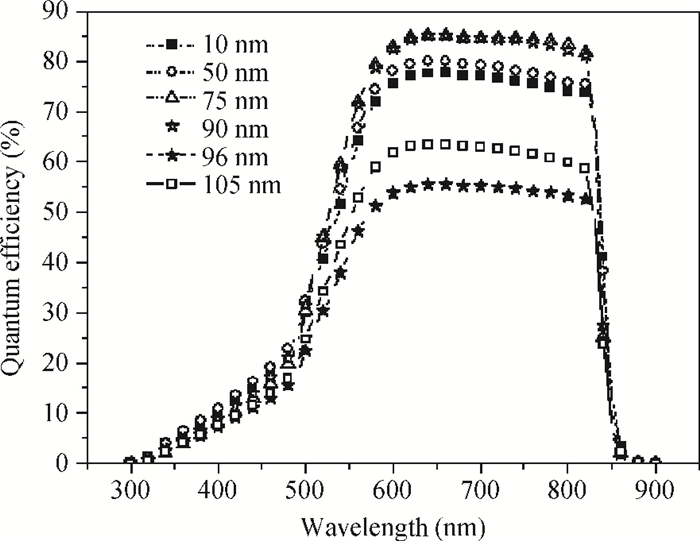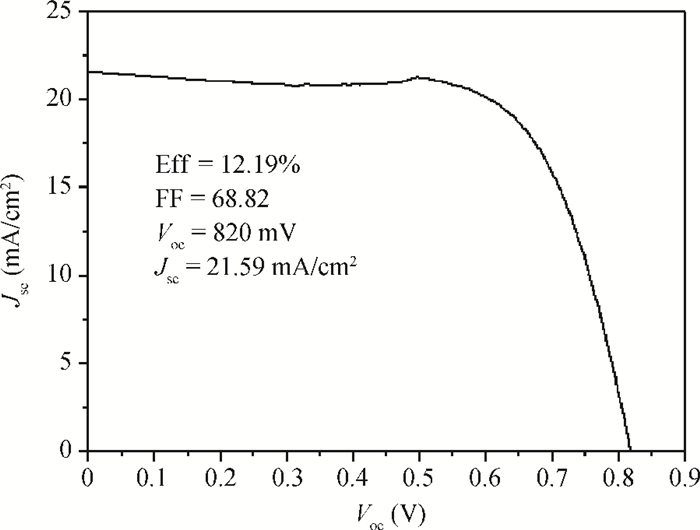| Citation: |
Zhi Lei, Lianghuan Feng, Guanggen Zeng, Wei Li, Jingquan Zhang, Lili Wu, Wenwu Wang. Influence of CuxS back contact on CdTe thin film solar cells[J]. Journal of Semiconductors, 2013, 34(1): 014008. doi: 10.1088/1674-4926/34/1/014008
****
Z Lei, L H Feng, G G Zeng, W Li, J Q Zhang, L L Wu, W W Wang. Influence of CuxS back contact on CdTe thin film solar cells[J]. J. Semicond., 2013, 34(1): 014008. doi: 10.1088/1674-4926/34/1/014008.
|
Influence of CuxS back contact on CdTe thin film solar cells
DOI: 10.1088/1674-4926/34/1/014008
More Information
-
Abstract
We present a detailed study on CuxS polycrystalline thin films prepared by chemical bath method and utilized as back contact material for CdTe solar cells. The characteristics of the films deposited on Si-substrate are studied by XRD. The results show that as-deposited CuxS thin film is in an amorphous phase while after annealing, samples are in polycrystalline phases with increasing temperature. The thickness of CuxS thin films has great impact on the performance of CdS/CdTe solar cells. When the thickness of the film is about 75 nm the performance of CdS/CdTe thin film solar cells is found to be the best. The energy conversion efficiency can be higher than 12.19%, the filling factor is higher than 68.82% and the open-circuit voltage is more than 820 mV.-
Keywords:
- CdTe solar cell,
- back contact,
- CuxS thin film
-
References
[1] Wu X, Keane J C, Dhere R G, et al. 16.5%-efficient CdS/CdTe polycrystalline thin-film solar cell. Proceedings of the 17th IEEE European Photovoltaic Solar Energy Conference, Munich, Germany, 2001:995 http://www.sciencedirect.com/science/article/pii/S0038092X04001434[2] First Solar Inc. Website at:http://www.firstsolar.com/[3] Sites J, Pan J. Strategies to increase CdTe solar-cell voltage. Thin Solid Films, 2007, 515:6099 doi: 10.1016/j.tsf.2006.12.147[4] Lin H, Irfan, Xia W, et al. MoOx back contact for CdS/CdTe thin film solar cells:preparation, device characteristics, and stability. Solar Energy Materials & Solar Cells, 2012, 99:349 doi: 10.1088/0022-3735/9/11/032/meta;jsessionid=9568DACD4BF392FCDD46F90C9FE1654D.c1.iopscience.cld.iop.org[5] Dobson K D, Visoly-Fisher I, Hodes G, et al. Stability of CdTe/CdS thin-film solar cells. Solar Energy Materials and Solar Cells, 2000, 62:295 doi: 10.1016/S0927-0248(00)00014-3[6] Sama M, Bayatib M R, Mojtahedib M, et al. Growth of Cu2S/CdS nano-layered photovoltaic junctions for solar cell applications. Appl Surf Sci, 2010, 257:1449 doi: 10.1016/j.apsusc.2010.08.066[7] Chu T L, Chu S S, Schultz N, et al. Solution-grown cadmium-sulfide films for photovoltaic devices. Electrochem Soc, 1992, 139:2443 doi: 10.1149/1.2221246[8] Romeo N, Bosio A, Romeo A. An innovative process suitable to produce high-efficiency CdTe/CdS thin-film modules. Solar Energy Materials and Solar Cells, 2010, 94:2 doi: 10.1016/j.solmat.2009.06.001[9] Han J, Spanheimer C, Haindl G, et al. Optimized chemical bath deposited CdS layers for the improvement of CdTe solar cells. Solar Energy Materials & Solar Cells, 2011, 95:816 http://www.sciencedirect.com/science/article/pii/S0927024810006264 -
Proportional views





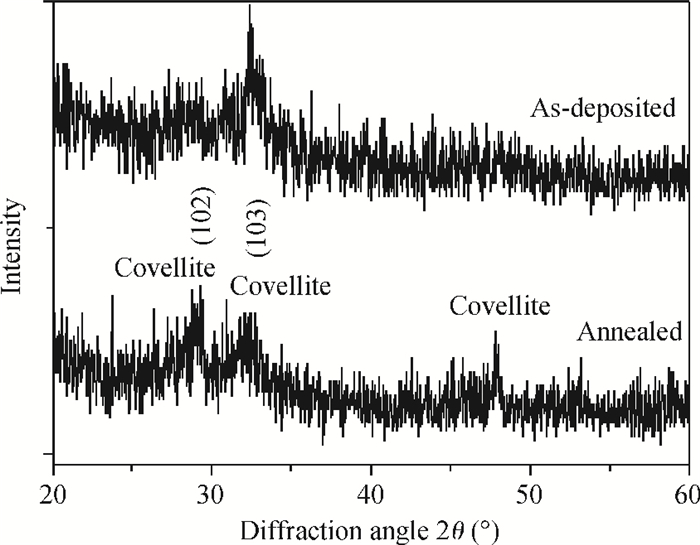
 DownLoad:
DownLoad:
